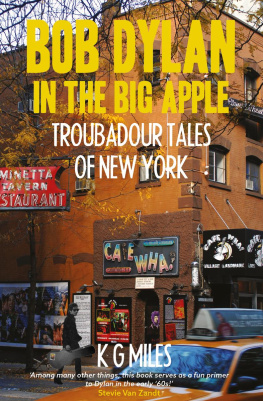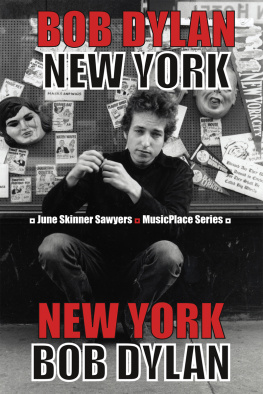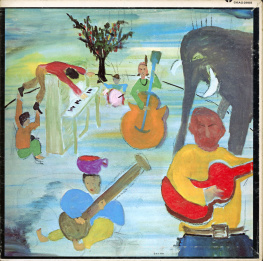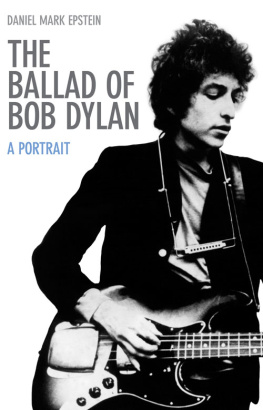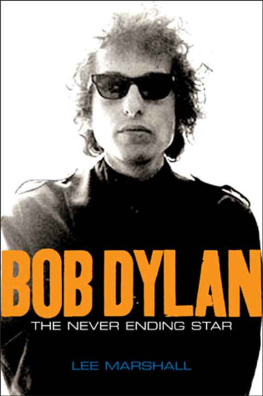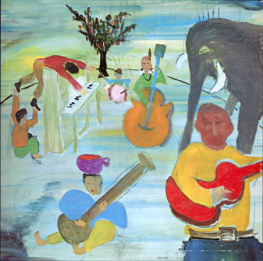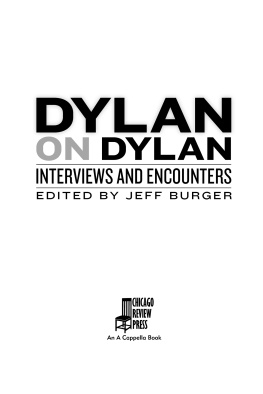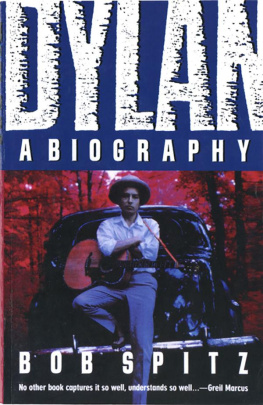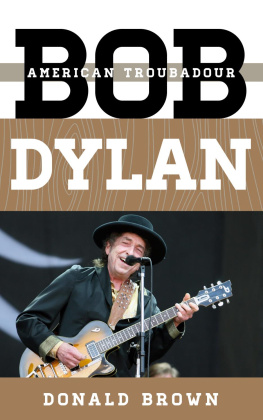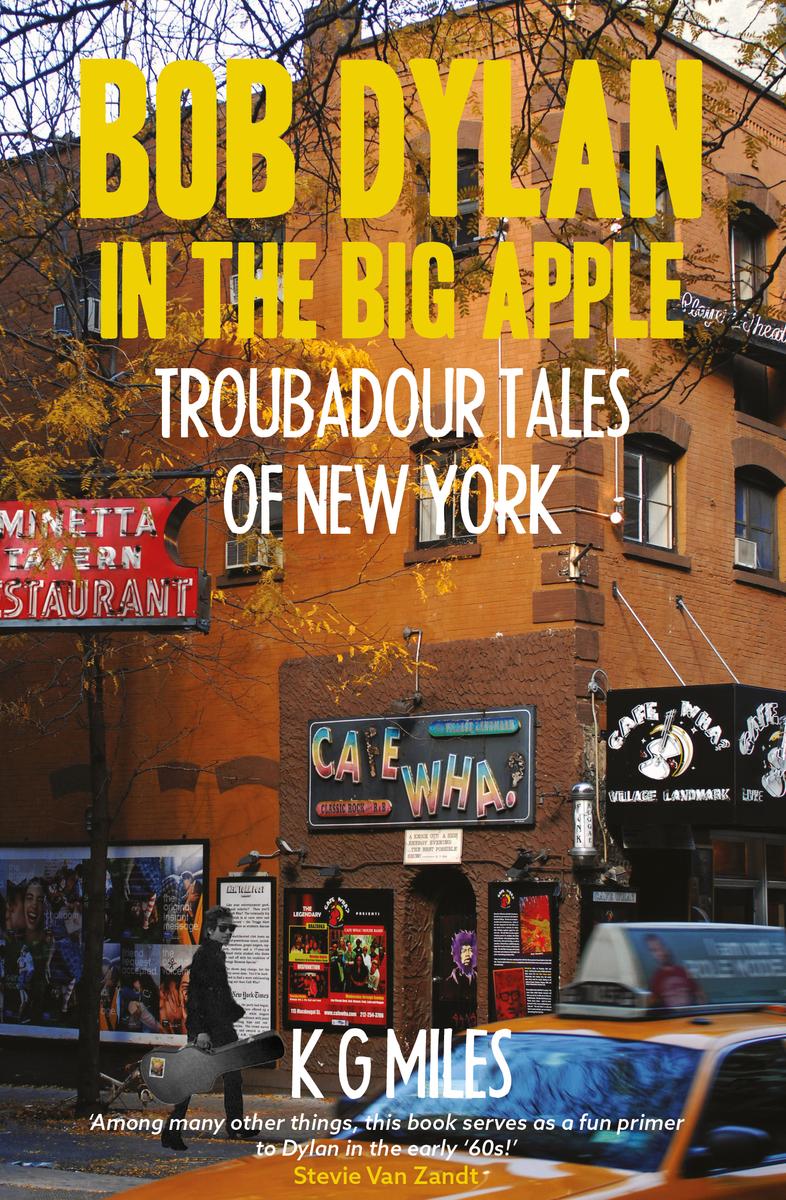Finally Jokerman is one of my favourite songs, but played by Dylan and the Plugz.
K G Miles, Bret Johnson and Sarah Rabb.
vii
by Anne Margaret Daniel
Nobody needs to ask me how I feel about this city.
Bob Dylan, onstage at the Beacon Theatre
H e arrived in New York City at the age of nineteen, either in December of 1960 or January 1961. He didnt linger on the Upper West Side, where he claimed he got out of the car right away and caught a subway train, nor in Times Square. Bob Dylan went straight to Greenwich Village. The home of artists, writers, actors, eccentrics, and progressives since the late 1800s, the Village was by 1960 the beating heart of the folk music scene. Long a home for jazz and cabarets, the Village was the logical place for young people singing old songs to gather, to share the music they had learned from John and Alan Lomaxs recordings, from The Weavers, from Folkways albums. Perhaps not his first night ever in town, but soon after, Dylan played an open mic night at the Cafe Wha? and then Gerdes Folk City the Village Gate the Bitter End the viii Fat Black Pussycat the Gaslight and, thanks to Izzy Young of the Folklore Center on MacDougal Street, the Carnegie Chapter Hall.
While he lived in the Village on the couches of kindred spirits and indulgent, admiring couples with no kids of their own, and then in his first place, a little room of ones own with 17-year-old Suze Rotolo, Dylan was a hungry, eager student. Liam Clancy, who he listened to raptly at the White Horse and who became a good friend, described him, in a good way, as a sponge. Along with the stages in basements and back rooms and bars, the Folklore Center, Dave Van Ronks and Paul Claytons libraries, and the reading room at the New York Public Library on 5th Avenue at 42nd Street were where he was educated. He learned about art and film and politics in the Village, too, thanks largely to Rotolo. And it was on stage at Gerdes that he was noticed by New York Times columnist Robert Shelton, who called him a bright new face in folk music. a cross between a choir boy and a beatnik, who composes new songs faster than he can remember them[.] Sheltons note was in the Times on 29 September, 1961. Just days later, John Hammond, Sr. signed Dylan, not yet 21, to Columbia Records. He was still a minor for purposes of signing a contract, but, Hammond later told Shelton,
Dylan said he didnt have a manager or parents. Dylan began recording his albums at Columbia Studio A on 7th Avenue. Bob Dylan (1962) shows the shape of New York throughout: a collection of covers ix of the folk songs he was singing in the Village every night; one original song by the young singer-songwriter himself on each side; and a cover portrait by Michael Ochs, brother of Dylans contemporary Phil. His next album, The Freewheelin Bob Dylan, flipped the ratio of original songs to covers: eleven of the first, and among them some of his best-known compositions still, and two of the latter. He drew on the musical wealth of New York City to supplement his own traditional, solo, guitar-and-harmonica playing; his backing band in the studio were mostly jazz musicians. Don Hunstein photographed Bob and Suze together for this albums cover, around the corner from their West 4th Street apartment on a snowy Jones Street. Suze walked out of Bobs life soon after, but decades later, as Dylan performed Simple Twist of Fate at the Beacon Theatre on Broadway, he sang lyrics about walking along city blocks, and wishing that the couple in the song had met in 1958 a reminder that the song once bore the title Snowbound and then 4th Street Affair.
As his career skyrocketed, Dylan lived and stayed in the city. His new manager Albert Grossman had a home on Gramercy Park that Dylan regularly used as a crash pad and setting for photo shoots; he rented homes in midtown, in Harlem, in SoHo, and bought 92-94 MacDougal Street in a Village homecoming after years of being based up the Hudson River in Woodstock. He maintained an apartment at the Chelsea Hotel, #225, in the late 60s and early 70s. He and his wife Sara x raised their children in the city at first, before moving to Malibu, California in 1973 a move that Dylan didnt quite complete at the time, returning to New York for long stretches of time to take art classes, to record, and to organize and run the Rolling Thunder Revue. Since 1988, he has made New York and a variety of venues a regular stop on his annual tours. He still has corporate offices, and perhaps residences, in town.
Even when Dylan isnt in the city, the city is in him. Talkin New York, carrying The New York Times, hard times in the city livin down in New York town, the streets of Little Italy, down to the Bowery slums, I drove down 42nd Street in my Cadillac, escapades out on the D train, staying up for days in the Chelsea Hotel and that heart cry of Im goin back to New York City / I do believe Ive had enough. K G Miles, Bret Johnson, and Dina Regine have followed Dylan from young Village troubadour to Broadway Bob, in residence with his band at the Beacon Theatre most recently in December 2019 East Side, West Side, all around the town, leaving no cobblestone unturned. Dylans inspirations, and traces, are everywhere in New York City. Read, and see.
Anne Margaret Daniel
Woodstock, NY, August 2021
xi
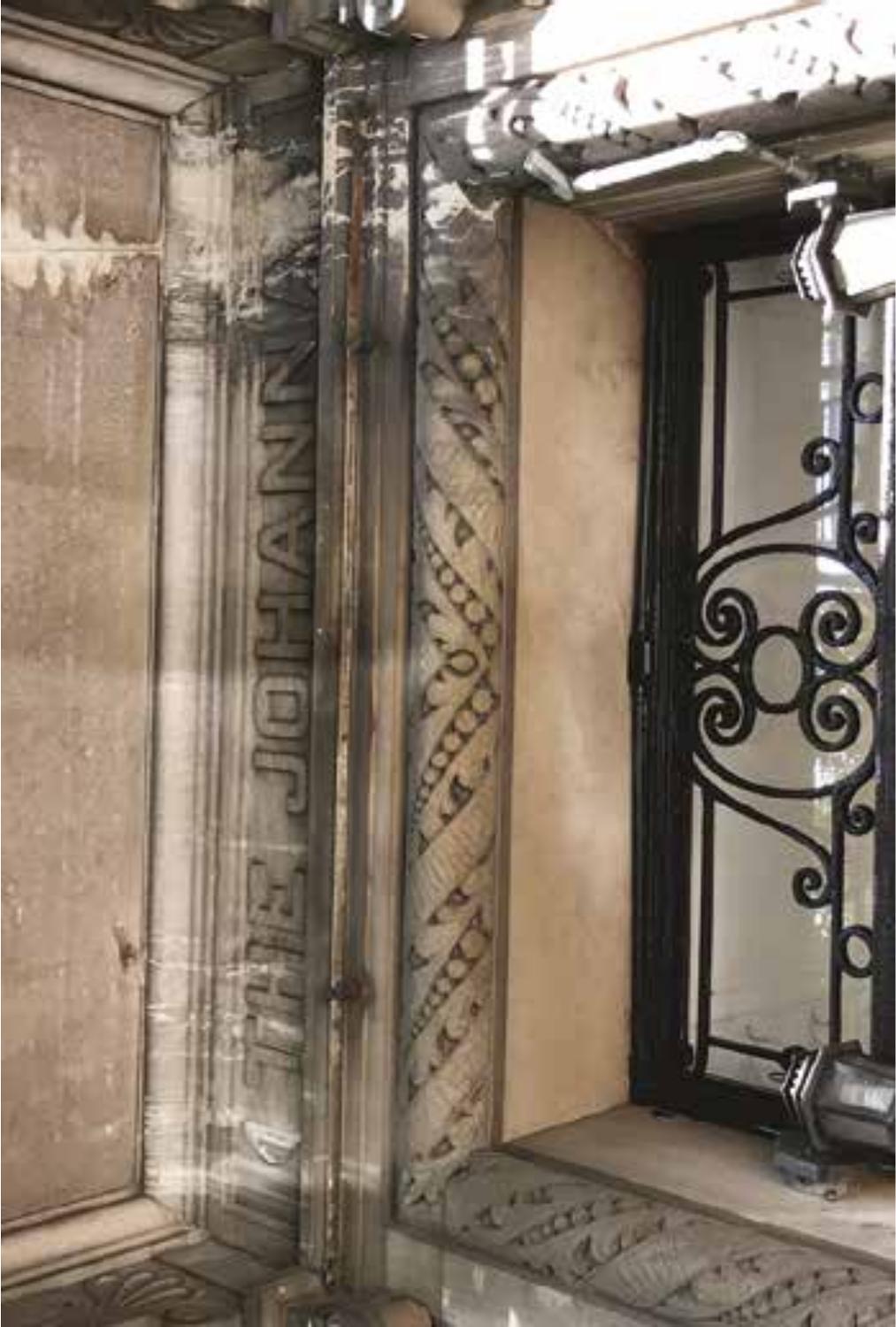
Dylan in New York. New York in Dylan. Always look up when you walk around Greenwich Village. Photo by Anne Margaret Daniel
S itting in South London, Dreaming of New York
From the Bowery to the Bronx, from the East Village to Harlem, from Hudson Heights to Lennox Hill, and from Korea Town to Little Italy, from Hells Kitchen to Greenwich Village, from Manhattan Valley, from Midtown South to Midtown itself Thats right were talking about the greatest piece of real estate on the planet, the little island known as Manhattan, so settle in and join us
Bob Dylan, Theme Time Radio, 4 April 2007
I was too young to enjoy the 1960s until the 1970s.
Like many English music fans, including a young Mark Feld who changed his surname to Bolan in homage, my introduction to Bob Dylan came with the exceedingly uncool medium of a Greatest Hits album.
Except the 1971 release More Bob Dylan Greatest Hits, as the double album is known in England, is far from a conventional round-up of the tried and the tested and the commercially popular. This album contained both new tracks and re-recorded tracks and the cover picture suggested it was a live album (it wasnt).
One track, however, is live and it appears suddenly, almost mystically, smack bang in the middle of Side Four. Its the previously unheard Tomorrow Is A Long Time, a haunting performance from a young Bob Dylan at the Carnegie Hall, which had been lying in a mythical drawer for eight years. Not only did this sound transform me from a South London bedroom to the New York of April 1963, it also sparked my journey on a Dylanista path from which Ive never strayed.
I am not a scholar. I am a fan. This book, both history and guide, provides an opportunity for me to conjure up that unique Bob Dylan and New York vibe. New York and Bob Dylan are inextricably linked. New York, and in particular Greenwich Village in the early 1960s, was a creative melting pot. Very much the right place and the right time for a young Robert Zimmerman to be reborn and to blossom as Bob Dylan.

